The appeal of the Willys Jeep knows no borders, no barriers

In his book Crusade in Europe, General Dwight D. Eisenhower named, along with the DUKW amphibious vehicle, “four other pieces of equipment that most senior officers came to regard as among the most vital to our success in Africa and Europe [which] were the bulldozer, the jeep, the 2½-ton truck, and the C-47 airplane.”
“Curiously enough,” he added, “none of these is designed for combat.”
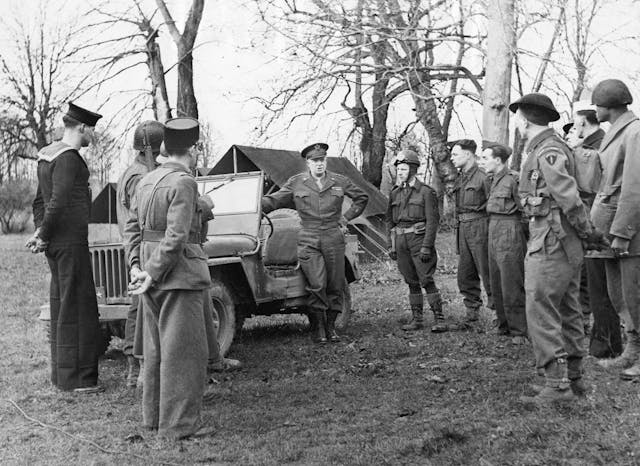
It’s a bit difficult to imagine a Willys Jeep as designed for anything less than war, though, especially when you’re sitting on a two-inch-thick, canvas-covered, foam cushion with all the comfort of a fakir’s bed—you really wouldn’t want to drive one of these for too long on the road. Besides, the original Jeep was ordered and specified by the U.S. Department of War; the clue’s in the name.
For Jeep is the quintessence of utility: stripped to the bare bones and caparisoned for combat; its five-dial instrument panel; pioneer tools (spade and axe) strung alongside the cab; a big steel steering wheel mounted on a column that looks like a jouster’s lance pointing at your chest; and lots of helpful stencils about the 40mph top speed, how to engage the 4×4 system, and the maximum seating capacity (five).

There’s a standard H700 military key sticking out of the slot just waiting to bury itself in my knee. I’m told that just about any H700 key will start a Jeep, but that the earliest examples didn’t have keys at all, which perhaps explains why so many plots in the TV series M*A*S*H centre round a stolen Jeep. There’s even a scabbard for an M1 Garand carbine, which I’d been really looking forward to firing, although that seems to have been left off this example.
Turn the key, press the starter, and the 2.2-litre, 60bhp/105lb-ft Go-Devil engine churns slowly into dignified, battle-proven life. The late great Alan Coren once wrote in Punch magazine about how, when the balloon went up, he’d like to be astride a BSA, in a Despatch Rider’s Coat, with a hip flask full of cherry brandy and a slab of Bendicks Sporting & Military chocolate in his pocket. Surely this Jeep must be the four-wheeled equivalent of Coren’s BSA.
So how did I get here, on a clear, chilly morn in a late Scottish autumn on the avenue up to Skibo Castle in Dornoch, Sutherland?
I’ll come back to this.

It was on July 11, 1940, that the U.S. War Department sent out to 135 U.S. manufacturers its specifications for a small, lightweight, three-seat, four-wheel-drive vehicle. The instructions said they had 11 days to respond, 49 days to build a running prototype, and 75 days to produce a run of 70 vehicles. Just two manufacturers responded.One of them was American Bantam, based in Butler, Pennsylvania. It had been born out of the wreckage of American Austin Car Co. and had long triumphed the idea of a small off-road vehicle to replace the horse. Its first formal attempt was laid out in early 1940 and was called the Bantam Reconnaissance Car.
Unsurprisingly, the War Department’s specification was a dream for this little company and fitted right in with the long-held ideas of chief engineer Harold Crist and president Frank Fenn, which were painstakingly drafted and formalised by Karl Probst, the firm’s prodigious engineer and designer.
The other firm to submit a bid was Willys Overland, based in Toledo, Ohio. Formed in 1908, at one time it was the second largest manufacturer of cars in America behind Ford.
We’ve made such rock stars of bloomin’ car designers these days, that it’s a salutary lesson to recall that Probst started work on July 17, finished on the 19th, and delivered it all to the War Department on the 22nd. Great (and highly alliterative) the Bantam Blitz Buggy might have been, it was clear that Bantam didn’t stand a wax cat’s chance in hell of making the kind of production schedule the War Department had in mind.
So, in one of the most perfidious acts in the motor industry (ranking alongside Rolls-Royce hiding behind the front of The British Equitable Trust to buy out Bentley Motors), the War Department handed Probst’s blueprints to Willys and Ford to ask them to cost out production of the Blitz Buggy. I mean come on, Ford didn’t even submit a design!
Ford and Willys produced their own interpretations of Bantam’s design. Ford’s was the GPW, whose initials might have contributed to the “Jeep” name (or it could have been the Popeye cartoon character Eugene the Jeep; or, as long-suffering mechanics put it, Just Enough Essential Parts). Willys unveiled the MB. And Bantam, well, it was was graciously allowed to produce utility trailers.
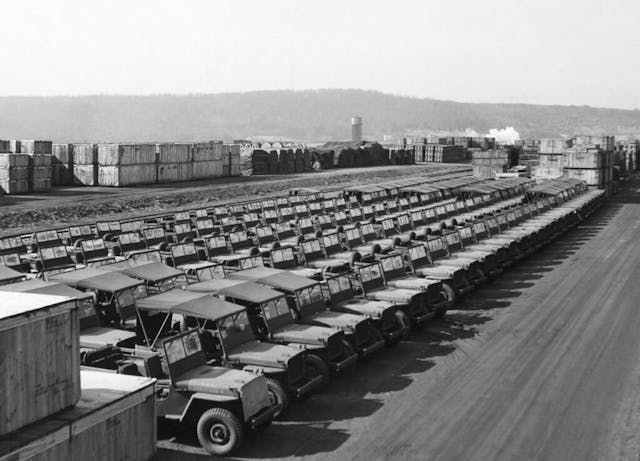
And so the U.S. Army Truck, ¼-ton, 4×4, command reconnaissance vehicle got built, and in what numbers. More than 650,000 Jeeps were built during the war, over a quarter of non-combat production output of the US and far out-numbering the German’s Kübelwagen, which could barely muster 50,000 units.
In the process, Ford and Willys took everything away from Bantam. Ford patented a nine-bar vertical grille, so Willys patented its own now-celebrated version with seven vertical bars and patented the Jeep name. And while they all squabbled about who did and got what, the Bantam company faltered and died. In 1956, its trailer production was taken over by American Rolling Mills.
So, unwrap a square of Bourneville chocolate (Coren’s Bendicks isn’t available anymore), slot first in the three-speed ‘box, and lift the army-boot-sized metal clutch. A characteristic of the cable-and-lever-operated clutch is that it tends to engage all at once, which is made worse by age, a lack of lubrication, and a dearth of experience. It might explain the abrupt getaway of these vehicles we tend to see on screen, such as in Steven Spielberg’s Band Of Brothers series (Is it me or did the production department use at least half the world’s extant Jeeps?).
A fleecy sailing jacket just about keeps out the cold and gloves for that freezing steering wheel. The low-compression engine responds gently to the throttle, almost agricultural in feel. It growls as the revs climb, with the exhaust back pressure creating a blatty note out of the side exhaust. Out of the unsynchronised first and into second and with no doors, the world blurs on each side of the seat, like a camouflaged and hard-riding magic carpet. Into top third gear and the speedo needle is flickering around behind its tiny glass, 40mph, 50… Everything whines and roars at you, especially if the owner hasn’t followed the War Department Technical Manual TM9-803 to the letter, which basically sees you underneath the thing with a grease gun every other day.
I’ll let you into a secret: A well-tuned Willys Jeep is capable of over 65mph with a following wind, though the chassis and steering are hardly up to the job. This is one of those vehicles which is faster off the road than on it.
Decades ago, I visited the Normandy American Cemetery—a dignified, moving, and beautifully tended place. I helped a veteran up the shallow steps under the shade of the parasol-like stone pines. Half way up we took a rest and chatted. Turned out he was an old boy of the premier cru, a former member of the 101st Airborne who’d fought at the D-Day landings on June 6, 1944. He’d been dropped behind the German lines and cracked a bone in his ankle landing on a wall. For the next few days, he hobbled into firefights until his oppos secured a Willys Jeep to travel around in. “Thank God for that Jeep,” he said as we enjoyed a sneaky beer from my bag and stared out to sea.

My grandfather spent over 24 hours straight in one during World War II. Carrying classified orders in a briefcase from London, he was met at Dunkirk by a young American lieutenant and driven southeast to Paris to hand them over to an American general. He said it was one of the most uncomfortable vehicles he’d ever been in. It rained most of the way so one side of him was soaked and the state of the road meant they had to take to fields for most of the time.
“And you sit on top of the bloody fuel tank,” he said.

I told this story to Peter de Savary, the businessman, at a Jeep launch at Skibo Castle in Scottish Highlands. At the time, de Savary owned Skibo, the one-time home of Andrew Carnegie, the Scottish-American industrialist born in the 19th century, who made his fortune in America and who left us with the thoughtful epitaph that “the man who dies thus rich, dies disgraced” – an inspiration to leaders and the wealthy the world over.
De Savary was excellent company, though his cigars were whiffy. We traded Jeep stories and the following morning while I was having breakfast, I received a discreet invitation to walk round to the castle mews where de Savary’s personal WWII Willys MB was put at my disposal for a couple of hours. It was a thoughtful and generous gesture and one I’ll never forget.
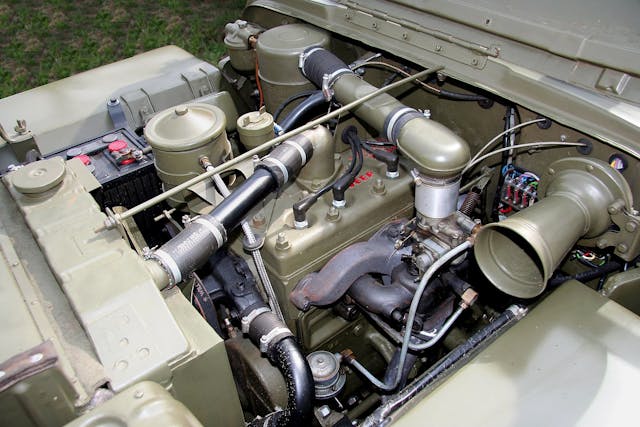
I climbed in and sat on a vestigial seat cushion on that cold and crispy Highland morning. The Go-Devil engine started on the button. I slotted the bent knitting needle of a gear change into first and charged up the drive of Skibo Castle. With no particular place to go, I drove this drab-green MB off into the hills behind the castle then down onto Dornoch Firth beach, where I engaged four-wheel-drive in low ratio and drove down to the sea shore. When I got back, of De Savary there was no sign and though I sent my thanks, I never got a chance to express my gratitude personally, and now I can’t as he died last year.
The Willys Jeep and its Ford equivalent were too good not to survive the end of hostilities. Many were supplied to British and Russian armies and went on to inspire the first Land Rover and the Russian GAZ 67B. Surplus Jeeps were given out as part of America’s postwar Lend-Lease deals to help countries get back on their feet. Most of those countries then went on to produce their own utility 4x4s inspired by the Jeep: the SsangYong Shinjin Jeep and Daihatsu’s Taft 4×4 of the 1970s; the Mahindra Jeep CJ of the 1950s; the 1960s Suzuki LJ; and let us not forget the Austin Gipsy/Champ of the 1950s and ’60s.
The improved Willys M38 military model went on to see service in the Korean and Vietnam Wars, and the civilian CJ-2A and later CJ-3A became hugely popular workhorses for the American public. All the while more creature comforts were introduced, along with doors, heaters, and one-piece windscreens. The CJ-5 model, which survived from 1954 to 1984, could trace its history back to the original Willys MB.
The Jeep name was sold to Henry Kaiser in 1953, and in 1970 Kaiser Jeep was bought out by American Motors Corporation, which in turn was bought out by the Chrysler Corporation in 1987, which entered into a “merger of equals” with by Daimler-Benz in 1998, which was purchased by Fiat in 2014, and which, in 2019, was subsumed into the giant Stellantis Group. Jeep is considered one of the stars of the group, and its Avenger all-electric model was announced as the 2023 European Car of the Year.
Folk get misty-eyed about the Willys Jeep and the part it played in the liberation of Europe from the Nazis, and I can understand why. In fact, writing this feature has made me really want an original Jeep, and I’ve got a suspicion you do, too.

***
Check out the Hagerty Media homepage so you don’t miss a single story, or better yet, bookmark it. To get our best stories delivered right to your inbox, subscribe to our newsletters.
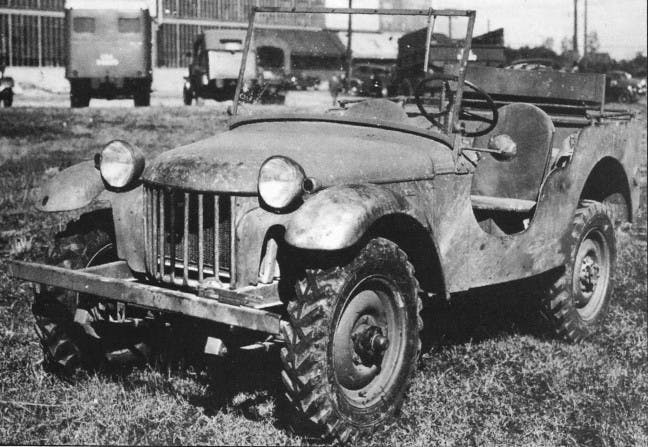

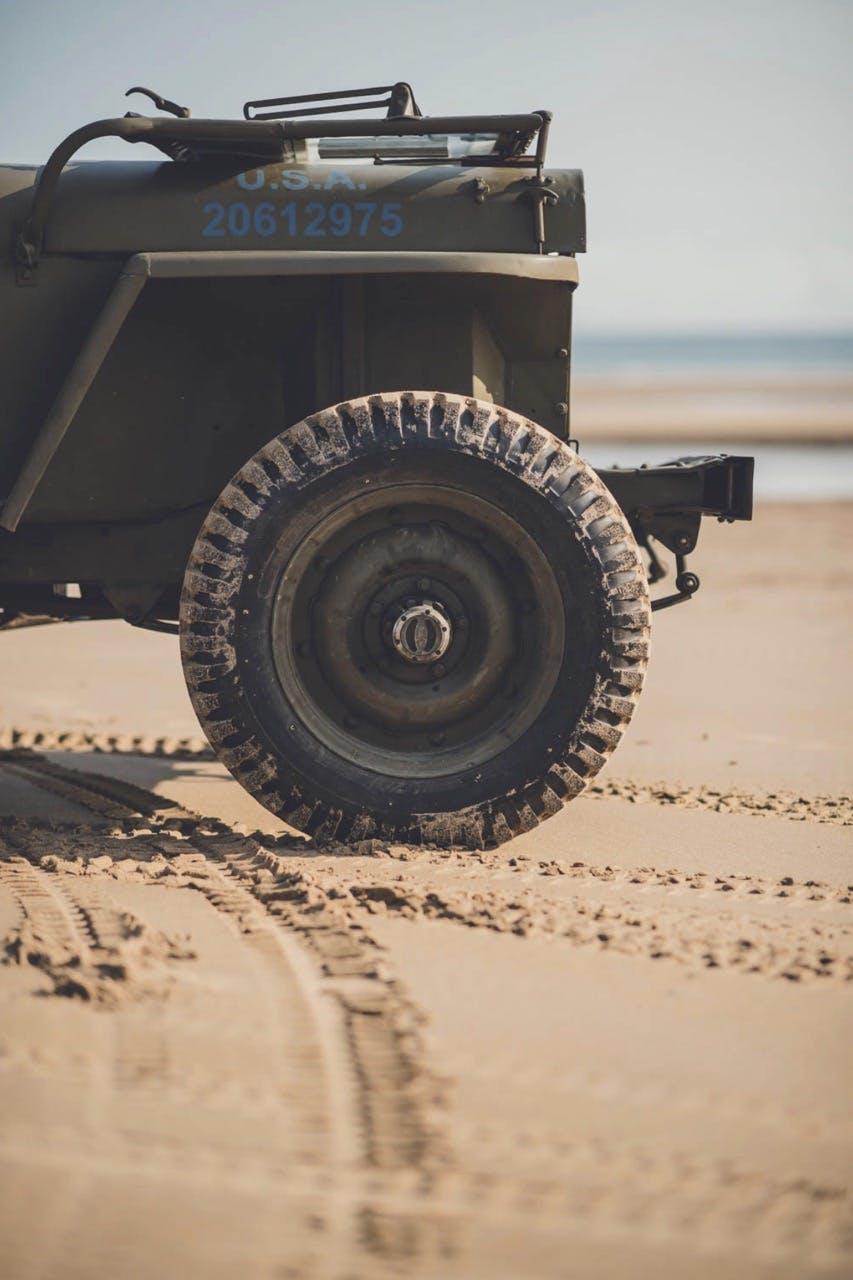


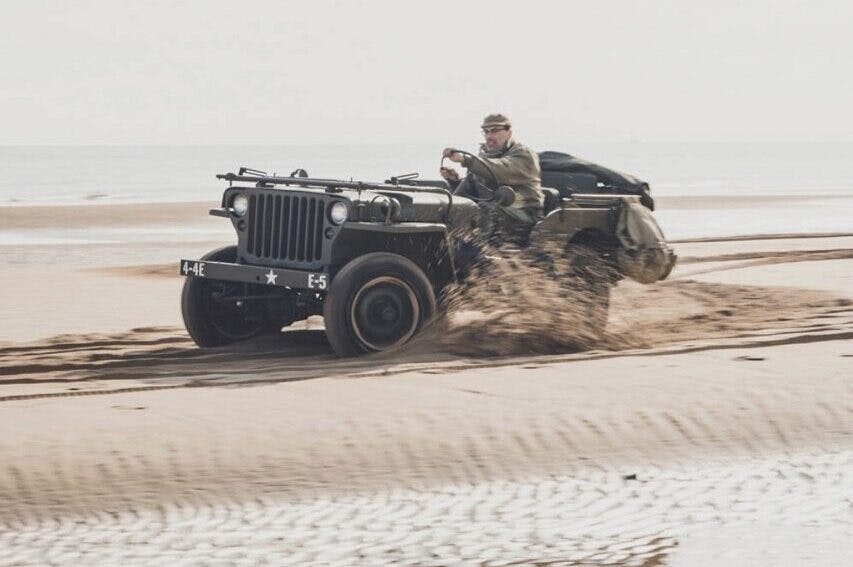
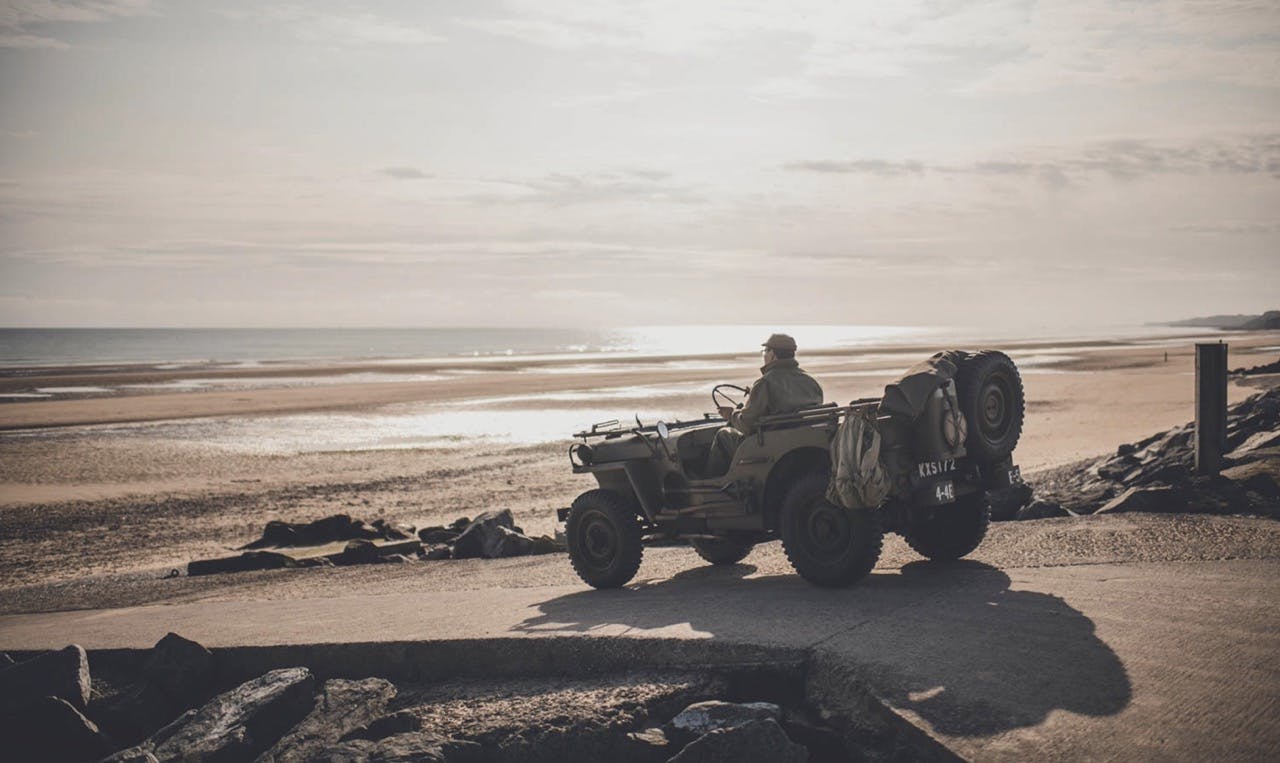

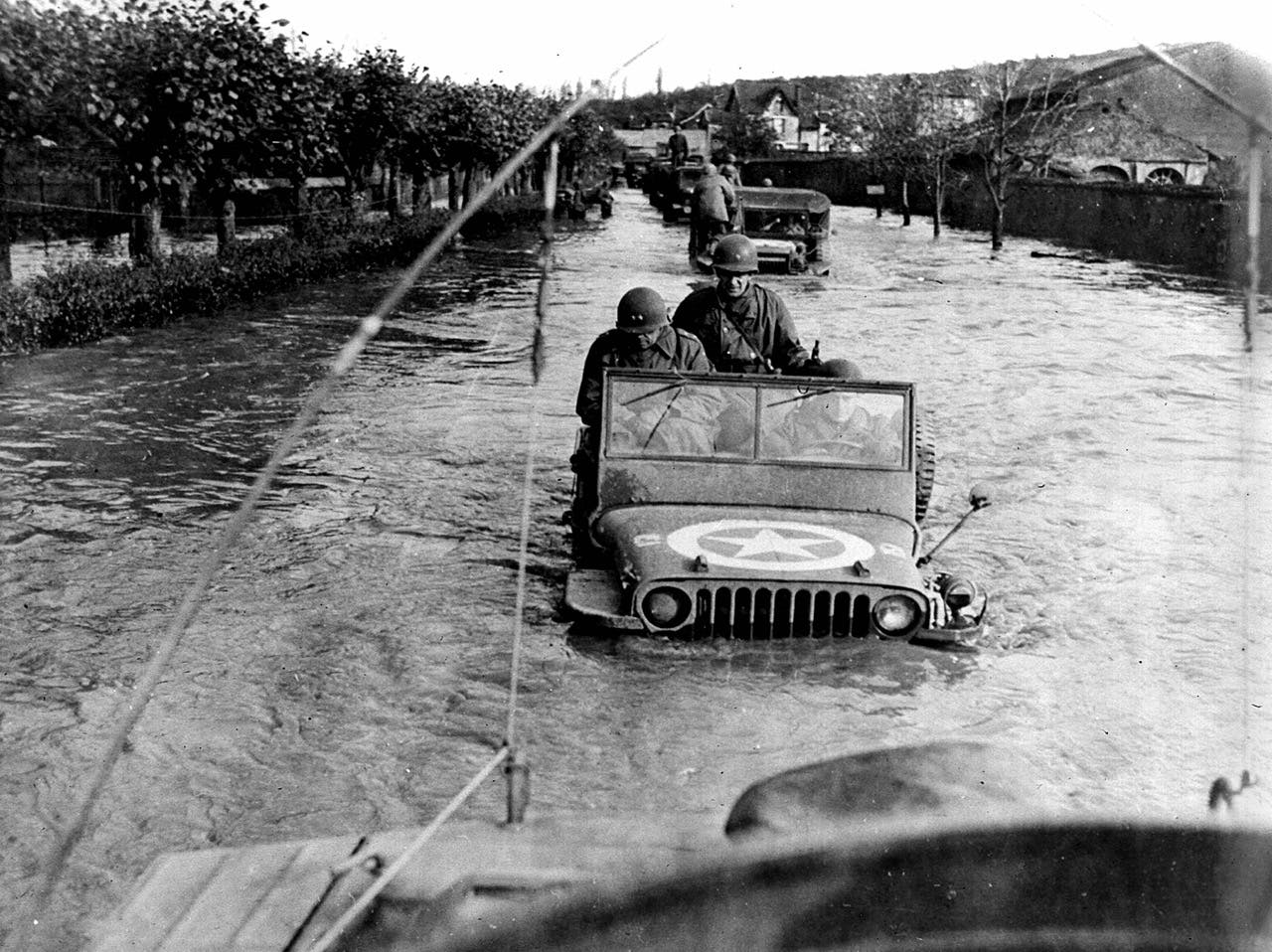
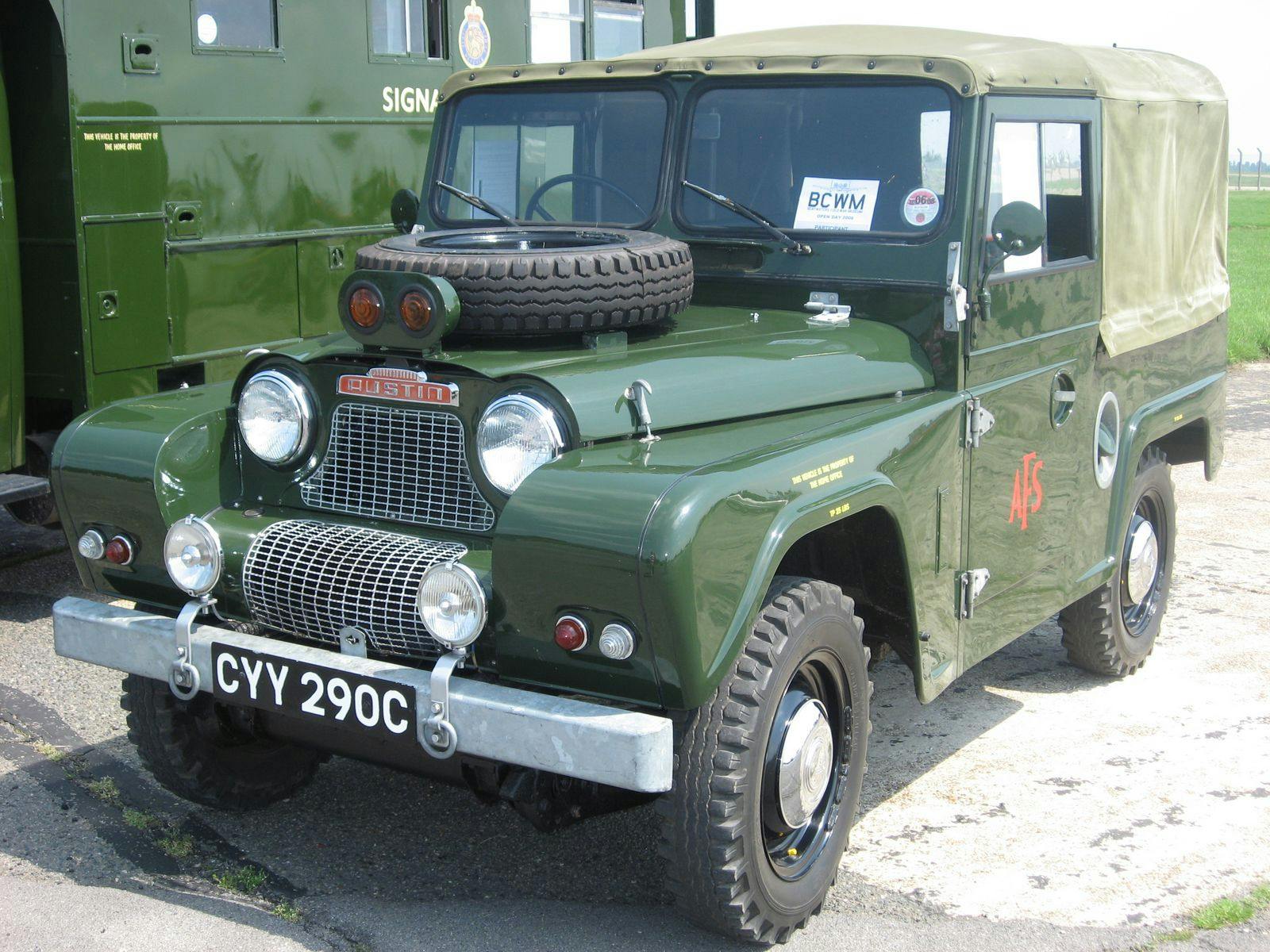
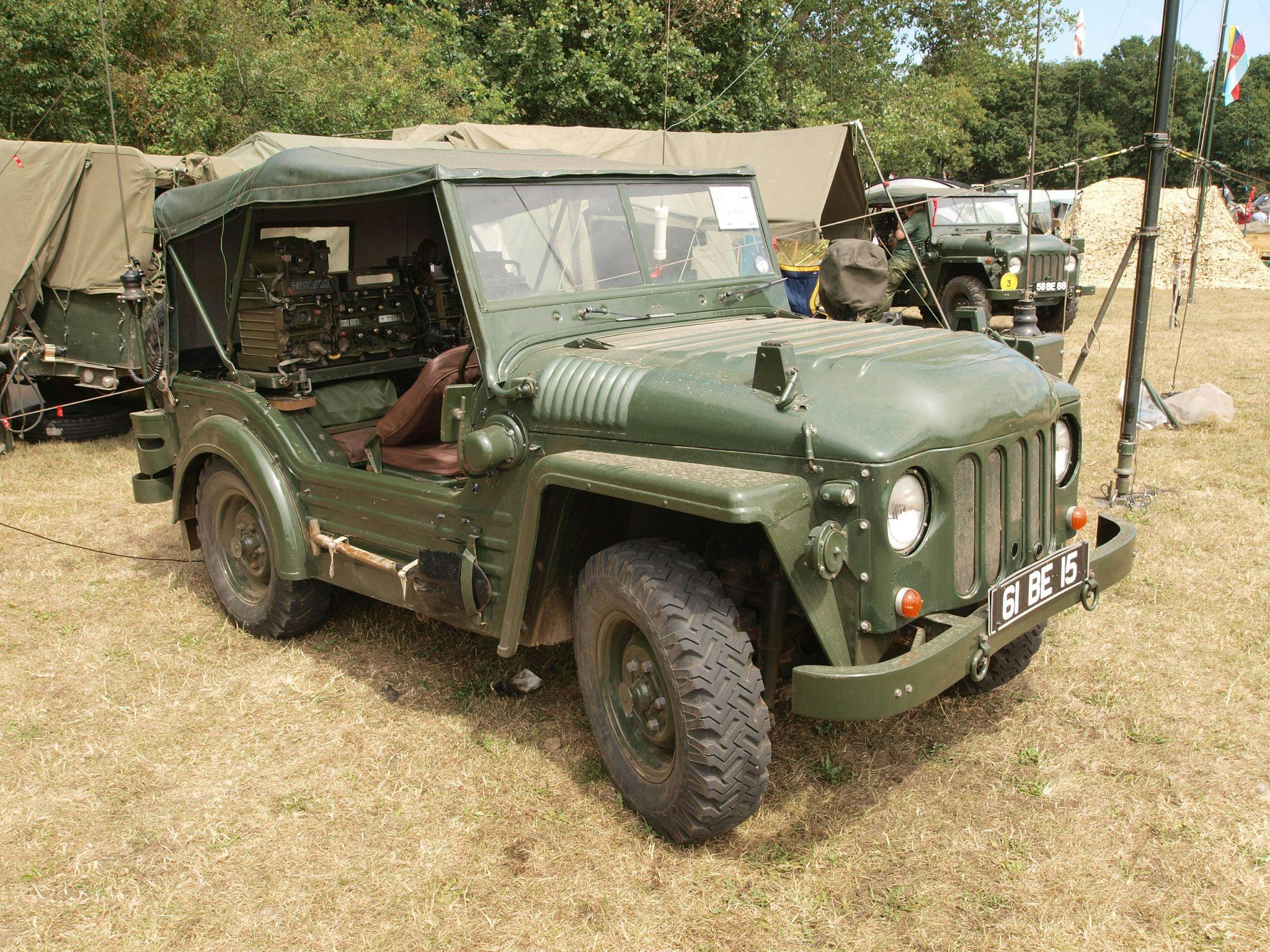


Andrew outstanding story, well done and a tip of the hat to the fading Greatest Generation. Thank you
I have a 1956 Willy’s Jeep. Body style. LL. Runs good just needs a little work in the steering. Vehicle ID number 5754834743
I have a 1952 CJ3A. It was modified to take a hydraulic belt conveyor to load DC4 type airplanes owned by Air Canada. In 1972 we removed the conveyor, installed quarter panel and seats and still to this very day drive it around in nice sunny days.
David A.
July 1, 2023 at 3:48 pm
I learned to drive in the summer of 1960 (age12) in my grand dads CJ2a. A real Jeep. Not four doors…no doors. Lots of fond memories.
I have a 1942 WW ll Ford Jeep,
How lucky am I.
I have some work ahead of me.
Drove it as late as 2019.
We had an old WWII jeep that we went to the beach in. My dad placed it in 1st low range andwould walk alongside it looking for clam beds. It was quite a sight watching those two WWII veterans slowly heading down the beach together.
Willys Jeep is still in our memories like free Willy if given time to roal it again with new pollution free engine she is the queen of all new model Jeep in her segment.
The civilian versions have 5.38:1 gears (vs. militaries 4.88:1) and a lower geared low range transfer case. They needed this to help with pulling plows and other farm equipment. We have a ’47 ‘2A with a Warn winch on the front and it is very handy to have around. On nice days I drive it to the grocery store or run errands, and take it to cars shows, as well as the off road park. It’s easy to park, get’s OK fuel economy, and is very reliable. If you want to read a good book that describes the differences between civilian and military jeeps, pick up Fred Coldwell’s “Preproduction Civilian Jeeps.”
I have a 1942 WW ll Ford Jeep,
How lucky am I.
I have some work ahead of me.
Drove it as late as 2019.
I enjoyed the history. Did you intentionally leave out Renault and Cerberus as owners of the Jeep Brand?
I agree, Fred Coldwells Book about pre-production Civilian Jeeps is a must read. For a ‘must see’ go to the Klairmont Kollections Automotive Museum in Chicago. They have CJ2-04, the earliest fully restored CJ2 AGRIJEEP Prototype.
There is a group of South Asian individuals here in the Vancouver area of British Columbia who are very committed to the WWII Jeep. All are 100% restored!! Some of the vehicles include the communications trailer, 50 cal machine gun (disabled of course) and every other sort of paraphernalia. Pretty impressive to see these guys show up – and wearing period correct uniforms as well!
What a great piece of story, and history, thanks! You could mention the adorable Alfa Romeo AR 51 « Matta », beautiful engine from an Alfa 1900, independent front wheels, locking differential and almost 60 mph. And oil leaks, it’s an Alfa! 2000 were built.
In ’54, I was in the Army Air Forces, Hanau Airfield, Germany. Two officers needed to get 40 miles to a small town, road was MUD and really bad, I drove wide open in 2nd gear 4WD all they way, I got them there, sore but in one piece, rain was terrible. As payment, I got a dozen nice steaks to take back, it was a long night.
“In fact, writing this feature has made me really want an original Jeep, and I’ve got a suspicion you do, too.”
Yes. Yes I do. I have for as long as I can remember. The oldest Jeep I’ve actually driven was a ’62, but I *think* it gives a pretty good impression of the original.
I daily a well sorted 61′ Willys Jeep CJ5. It puts a smile on my face and others as I ride around town with the windshield down, passing the mall crawler crowd who attempt to “Jeep Wave” at me, with no return from me like a smug grandaddy disappointed in his grandson….
A good story about the original Jeep. It’s no surprise they have a world wide following.